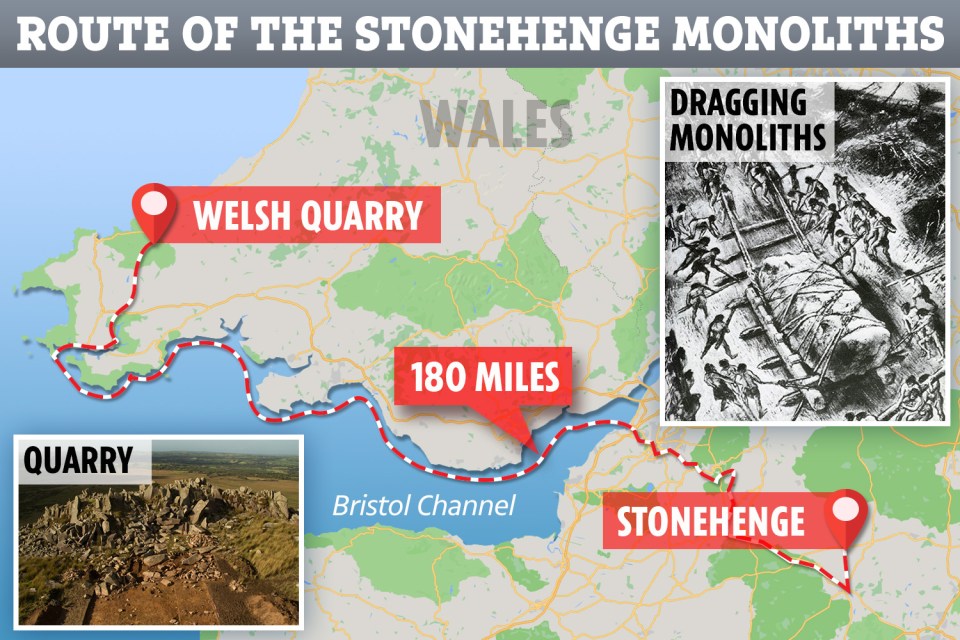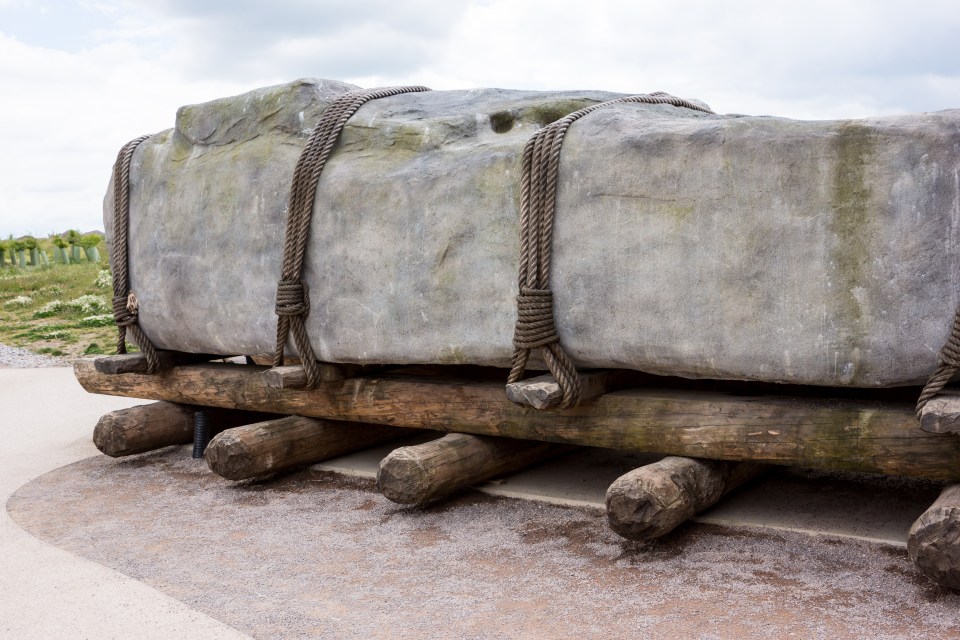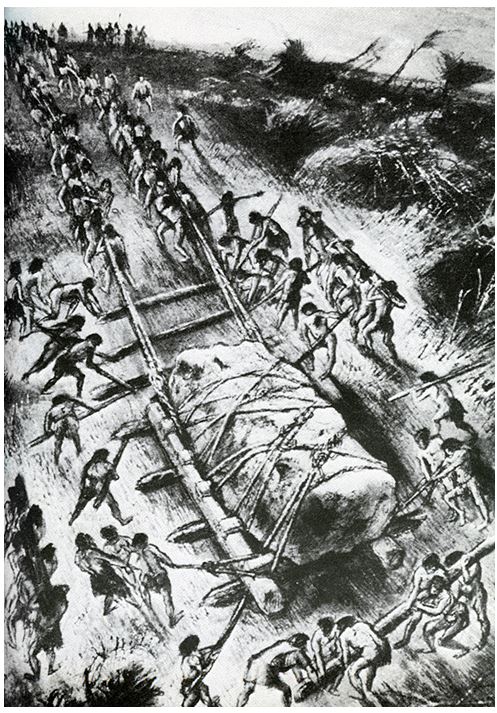Stonehenge builders may have ‘dragged rocks into place on sledges greased up with PIG FAT

THE HUGE monoliths that make up Stonehenge may have been dragged there using greasy sledges lubricated with pig fat, according to new research.
This theory is based on pig fat residue on ancient pottery found near the famous monument and fits in with the generally accepted concept that the monoliths were dragged by people all the way from quarries in west Wales.
The pig fat concept was proposed by researchers from Newcastle University after they studied pottery found at Durrington Walls, a Neolithic settlement that is just a couple of miles away from Stonehenge.
Dr Lisa-Marie Shillito, senior lecturer in Landscape Archaeology at Newcastle University, said: “I was interested in the exceptional level of preservation and high quantities of lipids – or fatty residues - we recovered from the pottery.
"I wanted to know more about why we see these high quantities of pig fat in pottery, when the animal bones that have been excavated at the site show that many of the pigs were ‘spit roasted’ rather than chopped up as you would expect if they were being cooked in the pots.”
The pig fat residues on the pottery have been associated with feeding the hundreds of people who made the monument for a long time but new analysis suggests that the pottery shards are actually from full storage sized bucket containers.
Shillito added: "There are still many unanswered questions surrounding the construction of Stonehenge.
"Until now, there has been a general assumption that the traces of animal fat absorbed by these pieces of pottery were related to the cooking and consumption of food, and this steered initial interpretations in that direction.
"But there may have been other things going on as well, and these residues could be tantalising evidence of the greased sled theory.
"Archaeological interpretations of pottery residues can sometimes only give us part of the picture. We need to think about the wider context of what else we know and take a ‘multi-proxy’ approach to identify other possibilities if we hope to get a better understanding."
It is now widely accepted that at least two spots in west Wales were mined for enormous monolith stones that still form part of the iconic monument today.
Neolithic humans dragged the monoliths more than 180 miles back to the mysterious site's location in Wiltshire.
Experts think they used a rudimentary pulley system of logs and ropes to transport the stones, which weigh up to 30 tons each, though they can't know for sure.
Archaeologists have long puzzled over Stonehenge's "Bluestones" – monoliths with a chemical makeup that does not fit the profile of any local stone.
They think the monument had around 80 originally, but only 43 remain.
What is Stonehenge?
What you need to know about Britain's most mysterious monument
- Stonehenge is a prehistoric monument in Wiltshire
- It's a ring of standing stones that measure around 13 feet high and seven feet wide
- Each stone weighs roughly 25 tons
- Experts say that the monument was constructed between 3000 and 2000 BC
- In 1882, it was legally protected as a Scheduled Ancient Monument
- And in 1986, the site and surroundings became a UNESCO World Heritage Site
- Stonehenge itself is owned by the Crown and managed by English Heritage
- But the land around Stonehenge is owned by the National Trust
- Part of what makes Stonehenge so mysterious is that it was produced by a culture with no written records
- Scientists regularly debate over how and why Stonehenge was built, and what it was used for
- One theory suggests Stonehenge was a sacred burial site
- Another proposes that it was used for celestial and astronomical alignments
- And some think it was an ancient place of healing
- It used to be believed that it was created as a Druid temple
- But we now know that Stonehenge predated the Druids by around 2000 years
TOP STORIES IN SCIENCE
In other archaeology news, a mystery stash of Roman coins found buried in Suffolk ‘may have been hidden during Boudiccan revolt’.
Have you ever visited Stonehenge? Let us know in the comments...
We pay for your stories! Do you have a story for The Sun Online news team? Email us at tips@the-sun.co.uk or call 0207 782 4368 . We pay for videos too. Click here to upload yours.


















